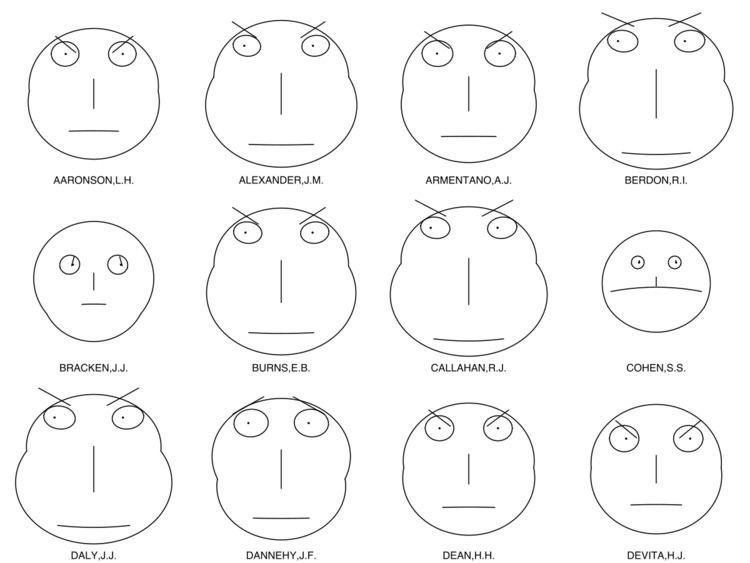 | ||
Chernoff faces, invented by Herman Chernoff in 1973, display multivariate data in the shape of a human face. The individual parts, such as eyes, ears, mouth and nose represent values of the variables by their shape, size, placement and orientation. The idea behind using faces is that humans easily recognize faces and notice small changes without difficulty. Chernoff faces handle each variable differently. Because the features of the faces vary in perceived importance, the way in which variables are mapped to the features should be carefully chosen (e.g. eye size and eyebrow-slant have been found to carry significant weight).
Chernoff faces themselves can be plotted on a standard X-Y graph; the faces can be positioned X-Y based on the two most important variables, and then the faces themselves represent the rest of the dimensions for each item. Edward Tufte, presenting such a diagram, says this kind of Chernoff face graph would "reduce well, maintaining legibility even with individual areas of .05 square inches as shown...with cartoon faces and even numbers becoming data measures, we would appear to have reached the limit of graphical economy of presentation, imagination, and let it be admitted, eccentricity."
Asymmetry
In 1981, Bernhard Flury and Hans Riedwyl suggested 'asymmetrical' Chernoff faces; since a face has vertical symmetry (around the y-axis), the left side of the face is identical to the right and is basically wasted space – a point also made by Tufte. One could have the 18 variables that specify the left be one set of data, but use a different set of data for the right side of the face, allowing one face to depict 36 different measurements. They present results showing that such asymmetrical faces are useful in visualizing databases of identical twins, for example, and are useful in grouping as pairs of Chernoff faces would be.
